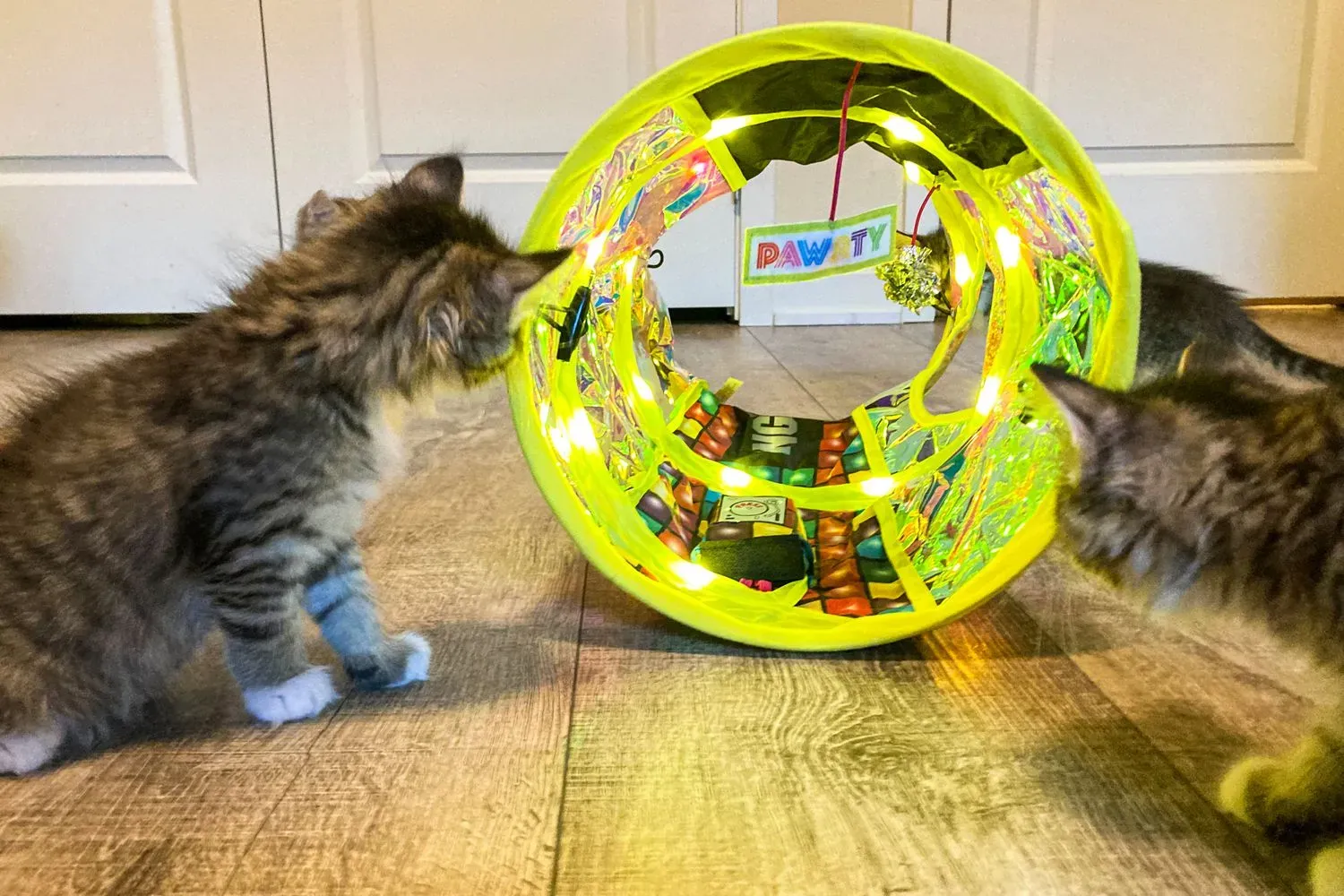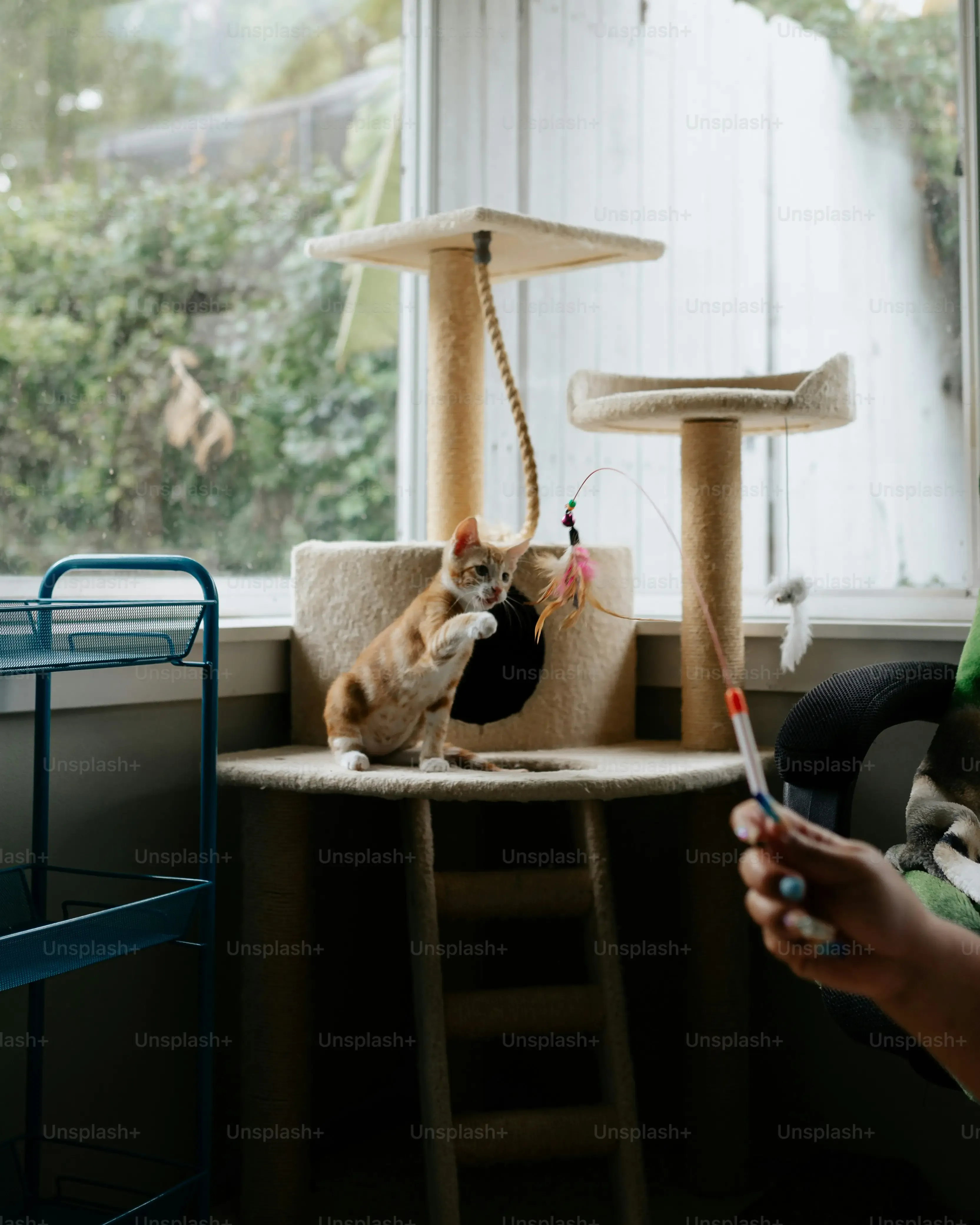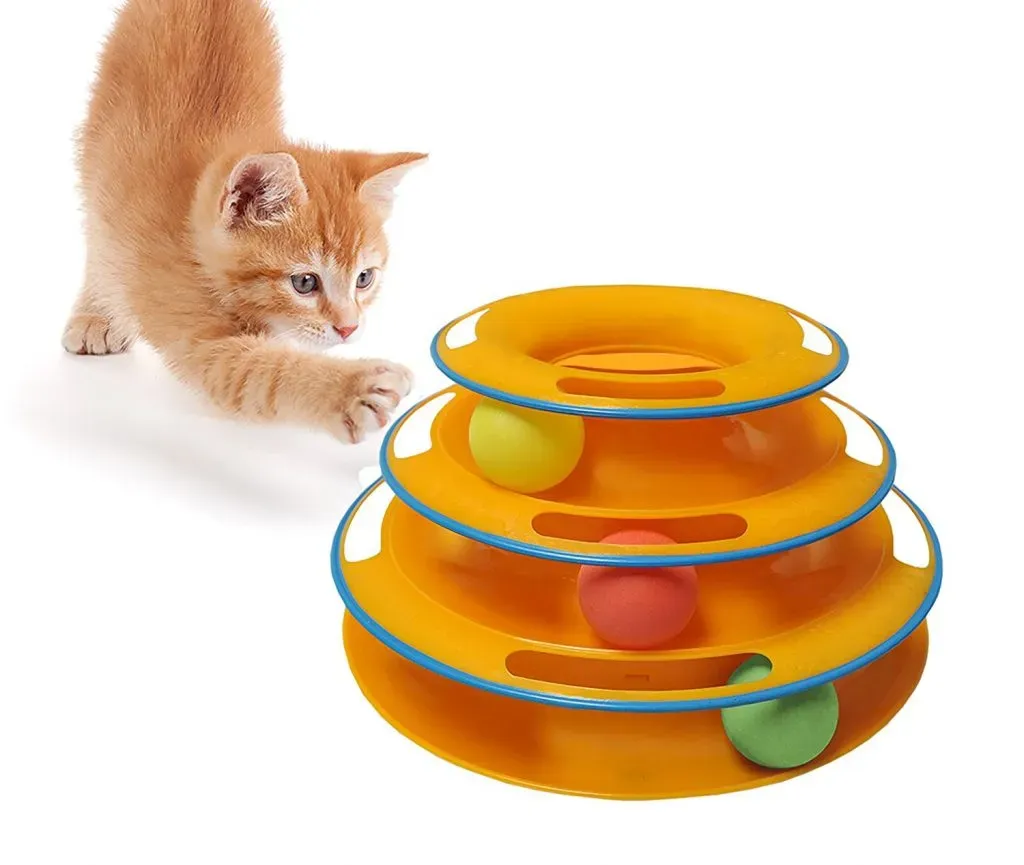Table of Contents
Let's be real. Your indoor cat probably spends a solid chunk of their day looking like a furry, four-legged loaf on the sofa. While naps are vital for peak feline performance, a life confined indoors can feel a bit... dull. They've got primal hunting instincts hardwired into them, and without an outlet, you might end up with shredded furniture or a perpetually grumpy housemate.
Why Your Indoor Cat Craves Interactive Play

Why Your Indoor Cat Craves Interactive Play
Instincts Don't Disappear Indoors
Look at your cat. Really look. Even if they're currently performing their award-winning impression of a furry speed bump, beneath that placid exterior lies a finely tuned predator. Generations of stalking, pouncing, and chasing aren't just wiped away because they've got a heated bed and an automatic feeder. Their brains and bodies are still wired for the hunt. They need to express those natural behaviors, that drive to pursue and capture. Ignoring this is like telling a fish it doesn't need water; it simply won't thrive.
Confining a creature built for hunting within four walls creates a fundamental mismatch. Without opportunities to stalk imaginary prey or chase down a wiggling target, that pent-up energy and instinct has to go somewhere. Sometimes it manifests as late-night zoomies terrorizing dust bunnies, other times it's directed at your ankles or the expensive drapes. Providing appropriate outlets is crucial for their mental and physical well-being. This is precisely Why Your Indoor Cat Craves Interactive Play.
- Cats are hardwired predators.
- Indoor life limits natural hunting behaviors.
- Unexpressed instincts can lead to frustration.
- Play mimics the hunt sequence (stalk, chase, pounce, kill bite).
The Cost of Boredom
A bored cat isn't just a slightly annoying one; it can be a genuinely unhappy and unhealthy one. Chronic lack of stimulation contributes to stress, which can manifest in various ways. We're talking over-grooming leading to bald patches, inappropriate urination outside the litter box, increased anxiety, and even aggression. Physical health suffers too; inactivity leads to weight gain, joint issues, and a general decline in vitality.
Interactive play is the antidote to this indoor ennui. It burns calories, keeps muscles toned, and sharpens cognitive functions. More importantly, it provides mental enrichment, giving them a puzzle to solve and a challenge to overcome. Successfully "catching" the toy releases dopamine, that feel-good chemical, reinforcing positive behaviors and reducing stress. It's not optional; it's foundational to helping your indoor cat live their best, most balanced life.
Exploring the Best Interactive Toys for Indoor Cats: Types and Benefits

Exploring the Best Interactive Toys for Indoor Cats: Types and Benefits
Exploring the Best Interactive Toys for Indoor Cats: Types and Benefits
Alright, so you're convinced your cat needs more action than just batting a dust bunny under the fridge. Great. Now, the market is flooded with stuff claiming to be the best interactive toys for indoor cats. It's easy to get overwhelmed. The key is understanding that "interactive" covers a lot of ground, and what one cat considers peak entertainment, another might eye with suspicion before walking away. We're talking everything from simple wands that mimic flying prey to complex puzzle feeders that challenge their brains, automated gadgets that move on their own, and even digital options. Each type taps into a different aspect of their hunting sequence or provides a unique form of mental stimulation, and figuring out which ones resonate with your particular feline weirdo is half the battle.
Choosing the Right Interactive Toys for Your Specific Indoor Cat

Choosing the Right Interactive Toys for Your Specific Indoor Cat
Understanding Your Cat's Inner Weirdo
Finding the best interactive toys for indoor cats isn't a one-size-fits-all situation. Your cat, bless their little cotton socks, is a unique individual with their own peculiar tastes and preferences. Some are aerial hunters, fixated on anything that flutters or mimics a bird. They'll go bonkers for wand toys with feathers or dangly bits. Others are ground-level stalkers, obsessed with things that skitter or hide, like mice or bugs. For them, crinkle balls, small plush toys, or even puzzle feeders that require batting are the ticket. Pay attention to how they play naturally – do they stare intently at flies on the window? Do they ambush your feet from under the rug? Their existing play style is your biggest clue.
Considering Age, Ability, and Energy Levels
Just like us, cats' needs change as they age. A hyperactive kitten needs durable toys that can withstand enthusiastic pouncing and chewing, often preferring fast-moving or unpredictable objects. A senior cat, on the other hand, might appreciate slower-moving toys or puzzle toys that don't require intense physical exertion but still offer mental stimulation. Think about their physical condition too. A cat with arthritis isn't going to enjoy leaping after a high-flying wand toy, but they might love batting at a stationary trackball or working on a treat puzzle. Size matters too; a Maine Coon needs a sturdier wand than a tiny Singapura. Match the toy to their current capabilities, not just the idealized hunter in your head.
- Observe natural play behaviors (aerial vs. ground).
- Consider age: kittens need durability, seniors need accessibility.
- Assess physical ability and health concerns.
- Match toy size to cat size.
- Think about their energy levels and stamina.
The Joy (and Frustration) of Trial and Error
Look, you're going to buy some toys your cat completely ignores. It's a rite of passage for any cat owner. You might spend good money on something that looks amazing, only for them to prefer the crumpled-up receipt or the box it came in. That's okay. It's part of the process of finding the best interactive toys for indoor cats specifically for *your* cat. Don't get discouraged. When you introduce a new toy, watch their reaction. Do their eyes dilate? Do they get into a low stalk? Or do they give it a sniff and walk away with an air of profound indifference? Learn from their reactions. Keep a rotation of toys to prevent boredom, and occasionally put some away and bring them back out later – sometimes novelty is the spark they need. It takes a little experimenting, but finding that one toy that makes them genuinely light up is worth it.
Maximizing Playtime: Tips for Using Interactive Toys Effectively

Maximizing Playtime: Tips for Using Interactive Toys Effectively
you've done the hard work. You've observed your cat's quirks, considered their age and energy, and invested in what you hope are the best interactive toys for indoor cats for *your* specific feline overlord. But simply buying the toy isn't enough. Think of yourself as the co-star in their little action movie. Your role is crucial. Play sessions need to mimic the natural hunting cycle: stalk, chase, pounce, and crucially, *catch*. Don't just dangle a wand toy in their face constantly; make it hide, dart, and wiggle like real prey. Let them "win" frequently by catching the toy at the end of a session. This success is incredibly rewarding for them and reinforces the positive association with play, making them eager for the next round.
Making Playtime a Non-Negotiable
So, there you have it. Giving your indoor cat the chance to stalk, pounce, and "catch" something isn't just a cute way to pass the time. It's a fundamental need, a way to honor their wild side in a safe environment. Investing in the best interactive toys for indoor cats and actually using them consistently can mean the difference between a bored, potentially destructive cat and a happy, well-adjusted one. It takes a little effort, sure, but the payoff – a healthier, more engaged feline friend and less shredded upholstery – is absolutely worth it. Now go forth and play!